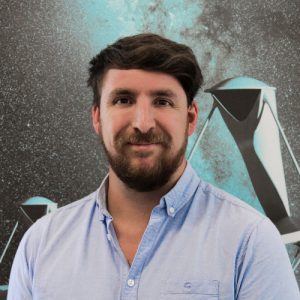Global Hands-On Universe Conference – August 22-28, 2020
Important info for those who did not register for the conference:
Global Hands-on Universe Conference 2020 will be broadcasted live on Facebook only.
Join us at https://www.facebook.com/GlobalHOU/
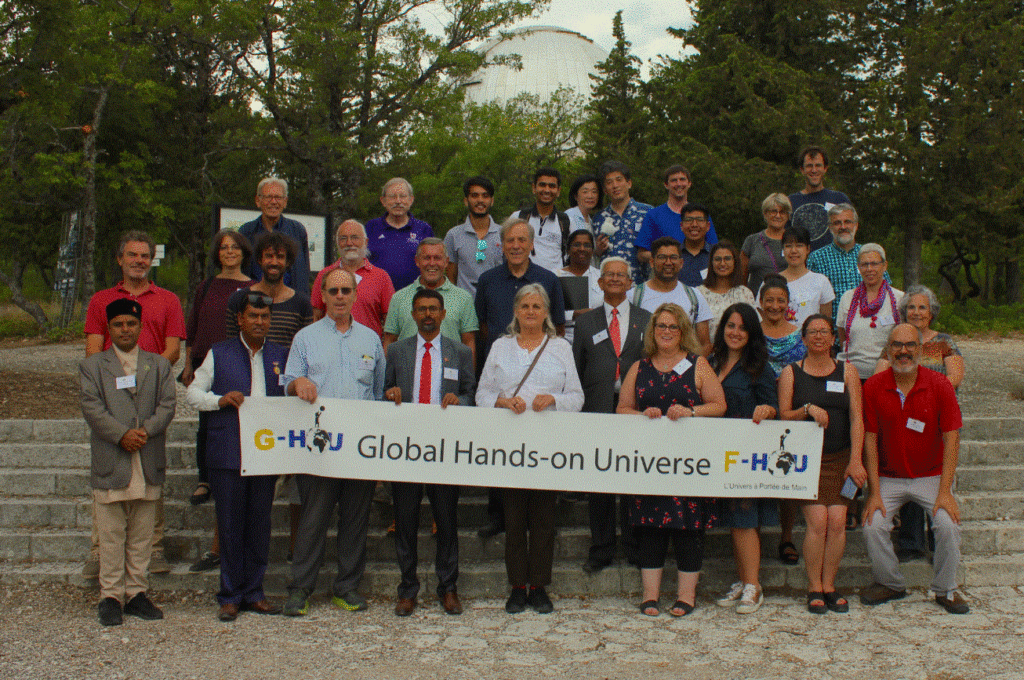
Message from the Organisers
We heartily welcome all teachers, students, educators, and other scientists to join us on our amazing journey with Global Hands-On Universe. Over the past decades, we have proven many times with Global HOU materials and well-trained teachers, students tend to learn more, teachers are re-energised about their discipline, students can do real science, students are inspired about careers in STEM disciplines, students learn IT skills, etc. There is little not to like about GHOU. Come join us!
How is this conference special
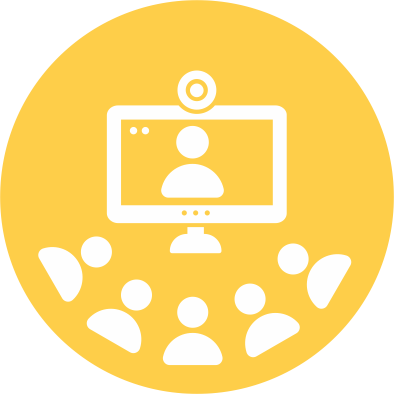
Online Conference
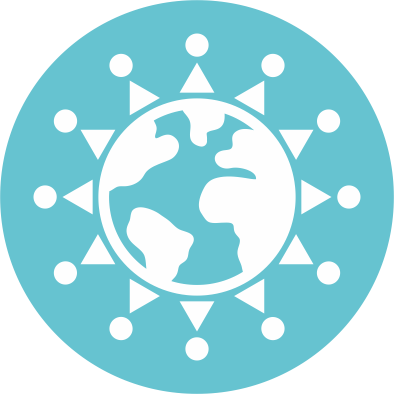
Truly Global

Interactive

Participatory
Key Activities at GHOU 2020
The Conference opening will be a live 24-hour webcast on August 22-23. Join our YouTube channel to watch a series of inspiring presentations from leading science educators.
Submit an abstract and present your work on the many conference topics!
Keynote talks by leading specialists from all continents.
Submit an abstract and present your work on the many conference topics! Presentations can be up to 60 minutes long.
Have a great idea for teaching STEM in the classroom? Want to share your favourite resource? Propose an online workshop and share your skills with fellow educators from around the globe.
Join forces with your peers and discuss hot topics of education in a roundtable.
Words from the HOU founder

This Global HOU is a world’s first in many ways.
1) We have developed inspiring, engaging, and effective science education materials, and now we have the means and marketing capabilities to share them with all peoples.
2) We will be seen by any teacher or student with Internet Access in the world!
3) We will save all of our workshops and proceedings and talk on Zoom, so they can be seen by people who missed the synchronous event.
4) All of our materials now are in amazing shape, and we just have to organize and build very easily accessible learning materials around them. That is, we have fantastic image processing software, fantastic activities, and fantastic trainers.
Keynote speakers
We have an exciting lineup of keynote speakers for the conference! The list is being continually updated.
- Alan Alves-Brito
- Amanda Bauer
- Amelia Ortiz-Gil
- Andy Newsam
- Bernard Foing
- Brad Carter
- Carl Pennypacker
- Colleen Megowan-Romanowicz
- Connie Walker
- Franck Marchis
- Hitoshi Yamaoka
- Joseph Diamond
- Kevin Govender
- Lina Canas
- Linda Shore
- Markus Pössel
- Martin Hendry
- Oded Ben-Horin
- Patrick Miller
- Rosa Doran
- Sarah Roberts
- Vinay B. Kamble
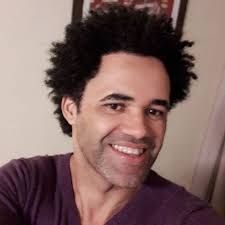 Astronomy Inclusion in Brazil
Astronomy Inclusion in Brazil
Alan Alves-Brito (Federal University of Rio Grande do Sul – Brazil)
I will show and discuss in this conference how some of our projects in Brazil, focused
on astronomy education and communication, are changing our local reality by promoting the intersection of gender, race, ethnicity, generation and class in the Physics and Astronomy field, involving universities, schools and communities.
 Vera C Rubin Observatory’s Modern Approach to Interactive Classroom Investigations
Vera C Rubin Observatory’s Modern Approach to Interactive Classroom Investigations
Amanda Bauer (Vera C Rubin Observatory – USA)
Abstract: The Vera C. Rubin Observatory’s dedicated Education and Public Outreach (EPO) team is designing and building an innovative, modern, and inclusive Formal Education program as part of the full facility construction project, scheduled for completion in 2022. In this talk, I will describe and demo a series of online astronomy investigations that provide a (1) pathway for students to engage with and interactive with real astronomical data, and (2) a complete set of educator support materials and professional development opportunities. I will also highlight Citizen Science opportunities with Rubin Observatory data.
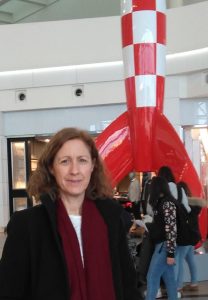 An inclusive approach to astronomy outreach and education
An inclusive approach to astronomy outreach and education
Amelia Ortiz-Gil (University of Valencia Astronomical Observatory – Spain)
Everybody benefits from an inclusive and accessible outreach and educational environment, not only people with disabilities. But sometimes the lack of materials and knowledge on how to proceed to achieve their inclusion holds us back when having the chance to reach for special publics. Our group and others around the world have been developing inclusive resources and tools that can be used in astronomy outreach and education to include publics with functional diversity. Moreover these special tools make astronomy more accessible and fun to everyone regardless of their physical condition. In this talk I will dwell a little on the benefits of inclusion and I will show some examples that have been successful in the field of astronomy outreach and education.
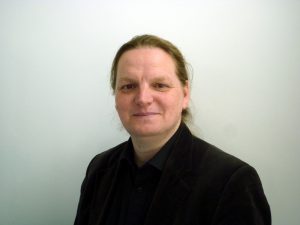 National Schools’ Observatory: Robotic Telescopes and STEM engagement
National Schools’ Observatory: Robotic Telescopes and STEM engagement
Andy Newsam (National Schools’ Observatory – United Kingdom)
For nearly two decades, the National Schools’ Observatory (NSO) has used astronomy and access to robotic telescopes to support STEM education (Science, Technology, Engineering and Mathematics), working with thousands of schools and children of all ages. In recent years the NSO team has expanded into other areas of engagement, working with under-represented and so-called “hard to reach” groups by collaborating with artists, theatre companies, community groups and more. In this talk, I will describe some of the lessons learnt, the importance of evaluation, the impact of what we do and some of the exciting possibilities for the future.
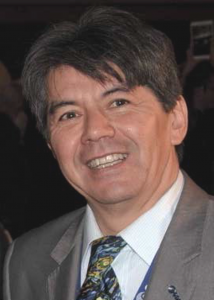 Together on the Moon and Mars
Together on the Moon and Mars
Bernard Foing (ESA – France)
EuroMoonMars is an ILEWG programme following up ICEUM declarations as a collaboration between ILEWG, space agencies, academia, universities and research institutions and industries. The ILEWG EuroMoonMars programme includes research activities for data analysis, instruments tests and development, field tests in MoonMars analogue, pilot projects , training and hands-on workshops , and outreach activities. EuroMoonMars includes a programme of grants for Young Professional Researchers. EuroMoonMars field campaigns have been organised in specific locations of technical, scientific and exploration interest. Field tests have been conducted in ESTEC, EAC, at Utah MDRS station , Eifel, Rio Tinto, Iceland, La Reunion, LunAres base at Pila Poland , and HiSEas base in Hawaii. These were organised by ILEWG in partnership with ESTEC, VU Amsterdam, NASA Ames, GWU in Utah MDRS (EuroGeoMars 2009, and then yearly for EuroMoonMars 2010-2013). EMMIHS campaigns (EuroMoonMars-IMA International Moonbase Alliance- HiSEAS) in 2018-2020 took place on Mauna Loa volcano in Hawaii .
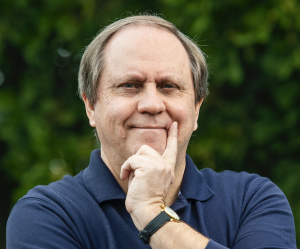 An Australian University Perspective on Astronomy Education Online
An Australian University Perspective on Astronomy Education Online
Brad Carter (University of Southern Queensland – Australia)
EuroMoonMars is an ILEWG programme following up ICEUM declarations as a collaboration between ILEWG, space agencies, academia, universities and research institutions and industries. The ILEWG EuroMoonMars programme includes research activities for data analysis, instruments tests and development, field tests in MoonMars analogue, pilot projects , training and hands-on workshops , and outreach activities. EuroMoonMars includes a programme of grants for Young Professional Researchers. EuroMoonMars field campaigns have been organised in specific locations of technical, scientific and exploration interest. Field tests have been conducted in ESTEC, EAC, at Utah MDRS station , Eifel, Rio Tinto, Iceland, La Reunion, LunAres base at Pila Poland , and HiSEas base in Hawaii. These were organised by ILEWG in partnership with ESTEC, VU Amsterdam, NASA Ames, GWU in Utah MDRS (EuroGeoMars 2009, and then yearly for EuroMoonMars 2010-2013). EMMIHS campaigns (EuroMoonMars-IMA International Moonbase Alliance- HiSEAS) in 2018-2020 took place on Mauna Loa volcano in Hawaii .
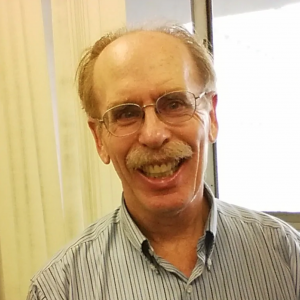 Continuous Improvements and Opportunities for Global HOU!
Continuous Improvements and Opportunities for Global HOU!
Carl Pennypacker (University of California at Berkeley – USA)
Over its decades of growth, Global Hands-On Universe has continued to grow and help teachers and students around the world. A fundamental principle of GHOU is that students can undertake aspects of image acquisition, measurement, analysis, and model building that emulate real science. GHOU has always been a leader in students’ use of real data. For example, the use of satellite data to measure the mass of the Black Hole in the center of the Galaxy has been emblematic of the amazing curriculum GHOU produces. Now with real data easily available from GHOU partner organizations IASC and Las Cumbres Observatory, and upcoming sky surveys, the chance to make discoveries is becoming much easier.
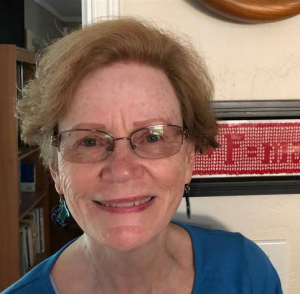 Remodeling Pre-university Astronomy Education
Remodeling Pre-university Astronomy Education
Colleen Megowan-Romanowicz (American Modeling Teachers Association – USA)
There is no quick and easy fix for the dearth of astronomers in K-12 education, but we can bring substantive astronomy to secondary science educators. Modeling Instruction is a research-validated (thank you, NSF!) method of teaching science that engages students in actually doing science. Students work collaboratively to collect the necessary data to build a conceptual model of a phenomenon. They represent, share and discuss their findings with one another to construct a consensus model of that phenomenon. They test and refine their model iteratively until they are satisfied with it as a tool for making sense of situations, and then they deploy their model in a variety of situations to see what kinds of predictions it makes or questions it can answer.
Modeling Instruction is disseminated through intensive 90-hour teacher workshops, and has been used successfully for the past 30 years in high school and middle school physics classrooms and for the past 15 years in chemistry and biology as well. Several year ago Modeling Instruction joined forces with Hands-On Universe to create an Astronomy HOU-Modeling Workshop that leverages the image analysis capabilities of SalsaJ or ImageJ to enable students to collect and analyze image data like astronomers do. In this talk I will describe the nuts and bolts of Modeling Instruction and then provide an overview of our Astronomy Modeling Workshop and of the high school Astronomy course we have developed around four fundamental models that are central to our understanding of the universe: how we measure space, why and how do things move, how do we know what’s going on out there (EM radiation), and cosmic evolution.
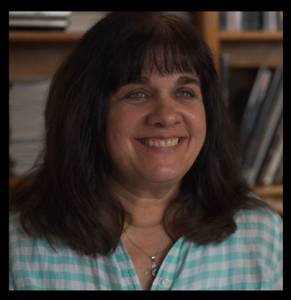
Come to the Dark Side! The Need to Protect Your Starry Night Sky!
Connie Walker (NOIRLab – USA)
The night sky has been a source of inspiration and wonder since the dawn of humanity. Light pollution is masking our view of the night sky at an accelerating rate. One way to make light pollution an innate concern, the way campaigns in the 1960s made littering unacceptable to a previous generation, is to make it relevant to our daily lives. What do we lose when we can no longer view a pristinely dark, starry night sky? Depletion of melatonin levels due to prolonged exposure to lights at night may have ties to cancer. The habits and habitats of animals are negatively affected, and some are pushed to the brink of survival. Glare in the aging eye creates hazards, and light trespass can make sleep difficult. Certainly, a washed-out sky due to light pollution impedes research astronomers do to understand our universe and our origins.
To bring back the stars requires thinking of the night as part of our landscape, a valued environment that deserves our attention and preservation efforts. To acknowledge something has value, requires awareness, relevance and possibly action. One means to increase awareness of the impact light pollution has on the night sky, is through a citizen-science campaign called Globe at Night, started fourteen years ago. The worldwide campaign involves the public in recording night sky brightness data by matching their view of a constellation (like Cygnus in the northern hemisphere and Sagittarius in the southern hemisphere) with maps of progressively fainter stars.
Reclamation of the night sky begins at home. Energy, cost and carbon-footprint are increasing exponentially: one third of the energy consumed in outdoor lighting in the US is wasted due to upward-directed light. Ask yourself: Does the outdoor light serve a clear and necessary purpose? Does the light fall only where it is needed (e.g. shielded and facing downward)? Is the amount of light appropriate for the intended task? Is the light connected to active controls, like timers, motion sensors and dimmers? Does the light source have a “warm” color so that emits less harmful blue light? Higher levels of your involvement can lead to creating and enforcing lighting ordinances within your city or county. Information along those lines can be found at the International Dark-Sky Association (darksky.org).
 Citizen science astronomy with Unistellar Network
Citizen science astronomy with Unistellar Network
Franck Marchis (SETI Institute – USA)
Unistellar is building the largest network of compact, easy-to-use, smart and digital telescope called the Enhanced Vision telescope (or eVscope) with the goal of bringing back to the people the joy of exploring the universe by observing deep sky objects from their home. The SETI Institute is a scientific partner of the project which will develop the scientic applications of this network. To date, ~1500 eVscopes have been shipped and by December the network will be larger with 3,000 eVscopes sent to citizen astronomers located in Europe, America, Australia, Japan and other places. We are currently developing pilot programs to test the capabilities of the eVscope network to conduct meaningful scientific studies, such as asteroid occultations, transiting exoplanets, Planetary Defense, and the study of comets. First scientific results collected with citizen astronomers in Europe and North America will be presented, this includes the detections of TESS Objects of Interest (TOIs), as well as successful detection of asteroid occultations and lightcurve of main-belt asteroids and near-earth asteroids. Today 1Tb of scientic data have been already collected from hundreds of active citizen astronomers.
We will also discuss the potential of the eVscope at schools (e.g. high schools & community colleges in the US) as a tool to learn about astronomy and data processing while bringing space to the classrooms. We will also describe programs with informal education centers (national parks, museums, youth associations) that could become a tool to connect the young generation to astronomy, educate them on the importance of the dark sky and help demystify science by allowing all of us to be part of the scientific conversation.

Activity of Public Relations Office in NAOJ
Hitoshi Yamaoka (National Astronomical Observatory of Japan)
National Astronomical Observatory of Japan (NAOJ) is the national center of astronomical research. It is also making many activities in astronomical education and outreach. I will introduce the activities done by our Public Relations Office, NAOJ. As well as the press releases of scientific results, wide range of activities to disiminate astronomy has been conducted, such as citizen science and live streaming.
Educational Outreach with the SKA: Effective Public Engagement on a Global Scale
Joseph Diamond (Square Kilometer Array – United Kingdom)
Scientific projects have been evolving over the past years to no longer be funded by a single country, but through a partnership of countries and governments. The Square Kilometre Array (SKA) is one of these projects, with a staggering 14 countries making up its membership. Being part of the outreach team for the SKA, our aim of scientific dissemination is to spread interest and knowledge of scientific issues by trying to reach people of all ages and social backgrounds. However, doing so on a global scale is no easy feat, and in my talk, I will be discussing the various challenges and solutions to creating a coordinated and effective communications and outreach programme to better engage with the public through the modern channels at our disposal.
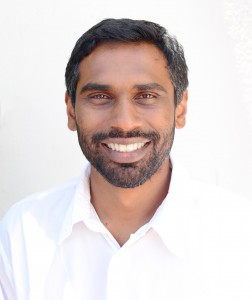 Astronomy for Development: the Importance of Inclusion Globally
Astronomy for Development: the Importance of Inclusion Globally
Kevin Govender (OAD/IAU – South Africa)
The Office of Astronomy for Development was established in 2011 and since then has coordinated 160 projects targeting over 100 countries, with 11 regional offices and language centres forming part of global management structure. In 2019, based on the experience gained from projects and input from regions, and informed by special OAD projects, partnerships and international trends, five themes emerged to be developed into flagship projects: (i) Stimulating economies e.g. astro-tourism, observatories for communities, etc; (ii) Science diplomacy e.g. peace, post-conflict, partnerships, policy, etc; (iii) Knowledge and skills from astronomy e.g. data science, teacher training, schools, etc; (iv) Technology from astronomy e.g. software, water, solar, dark skies, etc; (v) Addressing inequality e.g. gender, geographic, ability, etc. This talk will focus on addressing inequality, and the importance of inclusion globally.
 Astronomy for everyone: engaging the public through access, communication and international cooperation
Astronomy for everyone: engaging the public through access, communication and international cooperation
Lina Canas (Office for Astronomy Outreach IAU/NAOJ – Japan)
The IAU Office for Astronomy Outreach (OAO), was established in 2012 and is a joint project of the International Astronomical Union (IAU) and the National Astronomical Observatory of Japan (NAOJ).
The mission of the OAO is to engage the public in astronomy through access to astronomical information and communication of the science of astronomy, through a network of IAU National Outreach Coordinators (NOCs) composed by active outreach practitioners present in 131 countries and regions. In 2019, the IAU celebrated its 100th anniversary and, using the OAO central network, this global celebration of astronomy reached over 5000 registered activities in 143 countries and facilitated the direct involvement of an estimated 5-10 million people. In this talk, we will present the work of the OAO focused on building bridges between the IAU and the global astronomy community of amateur astronomers, outreach practitioners, educators, communicators, and the general public, and through international collaboration, to make the science of astronomy accessible to all.
 Promoting Public Science Literacy Through Astronomy
Promoting Public Science Literacy Through Astronomy
Linda Shore (Astronomical Society of the Pacific – USA)
On January 1, 1889, a total solar eclipse passed 85 miles north of San Francisco. An intrepid group of astronomers and amateur photographers traveled together to be among the first amateurs to capture images of this eclipse on photographic plates. A month later, the group met in San Francisco to share images, stories, and ideas – a gathering that proved so successful that they founded the ASP to support professional astronomers, astronomy enthusiasts, and anyone else eager to learn and share. The ASP’s mission remains unchanged after over 130 years: to promote science literacy by engaging scientists, educators, enthusiasts, and the public in astronomy. ASP’s core value is tht astronomy is a fundamentally democratic science, and should be made available to all people regardless of age, gender, background, economic status, religious beliefs, or abilities; ASP’s vision is a world where people of all ages and backgrounds engage in astronomy and enthusiastically share their passion and knowledge with others. While the ASP’s core values and purpose have remained essentially unchanged, our approach to promoting science literacy has evolved over time. ASP has thrived for over a century due to its ability to adapt; by utilizing new and improved methods of communication, adopting and promoting best practices in astronomy education, and creating materials, resources, programs, and initiatives to meet the needs of the global community. Today, the ASP is rapidly responding to the needs of a society gripped in the global COVID-19 pandemic, where communicating astronomy to the public has necessitated the development of innovative strategies and approaches to excite and engage audiences of all ages remotely. In addition, as the scientific community comes to grips with the results of its own history of systemic biases, the ASP has been fully committed to promoting inclusion in all of its programs, developing a several initiatives over the last six years focused on inclusion.
 The IAU’s Office of Astronomy for Education
The IAU’s Office of Astronomy for Education
Markus Pössel (IAU Office of Astronomy for Education / Germany)
Since January 2020, the International Astronomical Union has an Office of Astronomy for Education (OAE). The OAE, which joins the previously existing IAU Offices for Astronomy for Development (OAD), Astronomy Outreach (OAO) and Young Astronomers (OYA) is hosted at Haus der Astronomie, a center for astronomy education and outreach operated by the Max Planck Society in Heidelberg, Germany. The talk outlines the mission of the OAE, the current state of the office and its collaborative structure – notably the National Astronomy Education Coordinator Teams (NAEC Teams), and the upcoming OAE Centers and OAE Nodes, the activities that have already started and those that are planned for the future.
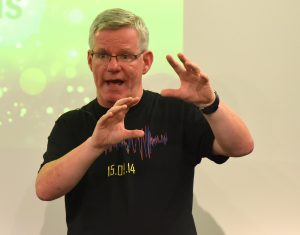 Listening to Einstein’s Universe: the Dawn of Gravitational-Wave Astrophysics
Listening to Einstein’s Universe: the Dawn of Gravitational-Wave Astrophysics
Prof. Martin Hendry (University of Glasgow – United Kingdom)
In September 2015 the LIGO Scientific Collaboration and Virgo Collaboration made the first ever direct detection of gravitational waves from the merger of two black holes more than a billion light years away – a discovery that was awarded the 2017 Nobel Prize for Physics. Less than five years later the new field of gravitational-wave astrophysics is now firmly established as one of the most vibrant research topics in all of physics – with a dozen more confirmed detections, a further 56 candidate events from the upgraded detectors’ third observing run, and a range of results that are bringing important new insights for cosmology, astrophysics, nuclear physics and relativity. Join LIGO astrophysicist Professor Martin Hendry, from the University of Glasgow, as he charts the story so far – and what lies ahead – for this exciting new field.
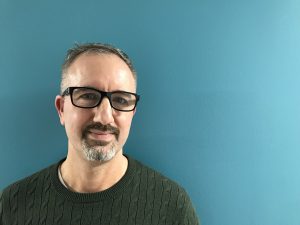
Credit: HSV
Global Science Opera (GSO) – research and teacher education in the interdisciplinary global classroom
Oded Ben-Horin (Western Norway University of Applied Sciences – Norway)
Global Science Opera (GSO) is the first opera initiative in history to produce and perform operas as a global community. It is a global creative education initiative made possible through digital interactions and live-streaming. It is a network of scientists, artists, schools and universities in all of the inhabited continents. GSO exists at the meeting point of science and art, of pupils and scientists, of all human cultures, of research and practice. GSO productions rely on a global community exploring interwoven science, art and technology (STEAM) within a shared inquiry process.
Now in its 6th year of existence, GSO has produced research results. This presentation presents findings regarding GSO’s impact in schools, its educational design and its potential capacity as an arena for teaching sustainable development.
Past experiences with GSO have made poignant the need for furthering the concept in two areas: theoretical conceptualizations of GSO as a creative practice and the need for systematic training of teachers within the GSO context. Both areas will be discussed in the context of the newly-established GSO4SCHOOL project. The former will bring together a theory of creativity in education which links creative activity and collaborative identity development (Wise Humanizing Creativity) with design-based thinking. The latter will be discussed through practical exemplifications of future GSO teacher training based on the GSO4SCHOOL project plans.
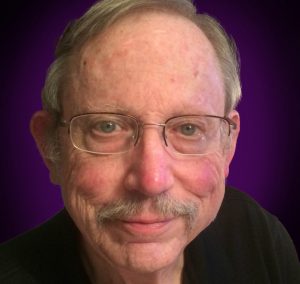 IASC: An International Asteroid Search
IASC: An International Asteroid Search
Patrick Miller (Hardin-Simmons University – USA)
Founded in October 2006 at Hardin-Simmons University (Abilene, TX) the International Astronomical Search Collaboration (IASC) has an online program for citizen scientists, called the Discovery Center. It is located at http://iasc.cosmosearch.org/. Through the Center, teams of citizen scientists make original discoveries of Main Belt asteroids (MBAs), near-Earth objects (NEOs), and trans-Neptunian objects (TNOs).
Image sets from Pan-STARRS (PS) and the Catalina Sky Survey (CSS) are distributed through the Center to the teams. They use the software Astrometrica, to search for and measure the astrometry of MBAs, NEOs, and TNOs that they detect in the sets.
Their astrometric measurements are sent to IASC. They are vetted to identify those objects that have not been reported in the nightly processing of Pan-STARRS and Catalina. IASC remeasures these objects and submits them to the Minor Planet Center (MPC) as new asteroid discoveries.
Each year 18,200 citizen scientists participate in the IASC asteroid searches. They come from 2,600 teams located in 80 countries. To date they have discovered >1750 Main Belt asteroids with provisional status. They have discovered 2 Earth-threatening asteroids, one comet, and 7 trans-Neptunian objects. 62 of their discoveries have been numbered and cataloged by the International Astronomical Union. The numbered discoveries have been named by the citizen scientists.
IASC is currently a Science Mission Directorate SMD-funded citizen science project NASA Grant #80NSSC18K0855 (July 2018 – June 2021). See https://science.nasa.gov/citizenscience.
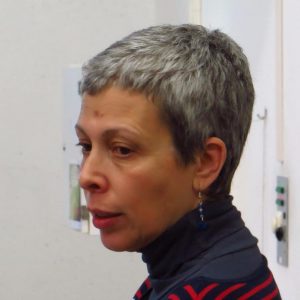 Innovation in Education with Astronomy and Space Exploration
Innovation in Education with Astronomy and Space Exploration
Rosa Doran (NUCLIO – Portugal)
During this presentation, I will present a few methodologies and strategies that teachers can use to introduce Astronomy and Space Exploration to the students. Inquiry-based and interdisciplinary learning, design thinking, community building are some of the topics presented. A few examples of platforms that can be used to create a sense of collaborative efforts and autonomous development of knowledge will be presented. The presentation intends to be a space to share ideas with educators and teacher trainers on how to introduce STEAM topics in a motivative and innovative way using online solutions. The five pillars of community building and a recent developed inclusive framework will also be presented.
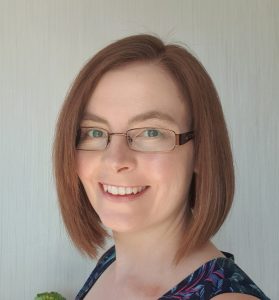 Observing the Universe with the Faulkes Telescope Project
Observing the Universe with the Faulkes Telescope Project
Sarah Roberts (Faulkes Telescope Project – United Kingdom)
The Faulkes Telescope Project (FTP) aims to engage, enthuse and excite school students in Science, Technology, Engineering and Maths (STEM) topics using astronomy as the hook. With access to the Las Cumbres Observatory global telescope network, we work with both professional and amateur astronomers aross the world to encourage schools to carry out real research with real scientists in real time. In this talk I will explain how schools can get involved in the project, and describe some of the activities that pupils can take part in through using the telescopes and data.
 Popularizing Astronomy for Social Change
Popularizing Astronomy for Social Change
Vinay B. Kamble (Department of Science and Technology – India)
India has a rich tradition of astronomy dating back to over 3,500 years beginning with the Vedas, a large body of religious texts originating in ancient India, wherein one finds earliest references to astronomical observations. The rich tradition of astronomical knowledge continued to be enriched by Indian astronomers and mathematicians over the years. However, during the last few centuries, astronomy in India could not keep pace with developments in the Western world, and astronomy continued to thrive only in a few pockets in the country. It was only during the last five decades or so, that concerted efforts spearheaded by Government and non-Government agencies began in taking science and technology to the people. In particular, astronomical phenomena like eclipses are generally viewed by the people with wonder and awe, and often coupled with fear, which makes people take refuge in religious practices or superstitions and blind faith. Hence educating the school children and the general public about astronomical and other natural phenomena would not only help them develop a rational outlook, but also help them think scientifically and act scientifically, ushering in social change.
In my presentation, I shall specifically dwell on the concerted efforts of Government and non-Government agencies in popularization of astronomy in India. On an earlier event of total solar eclipse on 16 February 1980, there was virtually a curfew in the country, since eclipses are considered to be harbingers of evil omen! But as a result of concerted efforts on a similar occasion on 24 October 1995, people everywhere in the country thronged outside their houses to have a glimpse of the totality and understand the awesome celestial phenomenon. School children and people now look forward to observe and understand astronomical phenomena, and take up projects and exercises related to learn more about them, be it solar or lunar eclipses, sighting of comets, or planetary transits! There is no gainsaying the fact that in Indian society, there is a definite and perceptible positive change, and that popularization of astronomy has played an important role in this transition!
Conference Topics
-
Innovative Methodologies for learning STEAM (Science, Technology, Engineering, Arts and Mathematics)
-
Inclusive Classrooms
-
Starlink Satellites and its impact on ground-based astronomy.
-
Planetary Defence
-
Science and Arts for Development
-
eVscopes
-
Robotic Telescopes and Hands-on Research in Classroom
-
Open Schools and Community Building
-
Dark Skies and Astronomy Heritage
-
Astronomy for Development and Sustainable Development Goals
-
Energy and Sustainability
Join Us
Sharing Experiences
By utilizing modern telecommunication, computer, and software capabilities, we can truly share our experiences from many of our schools and many nations. The sharing and learning that will take place in this conference should be very good!
How Teachers Benefit
Teachers will learn that they are part of a powerful global system that really works, has energy, and can change their lives and their students' lives for the better. And we have many field-tested, classroom-ready materials, and you will learn how to succeed with them, many times over.
Truly Global
This conference features an 24-h opening webcast, followed by 5 days of regional sessions. These sessions are hosted in 3 different time zones spread 8 hours apart from each other. Presentations can happen in a variety of languages.




